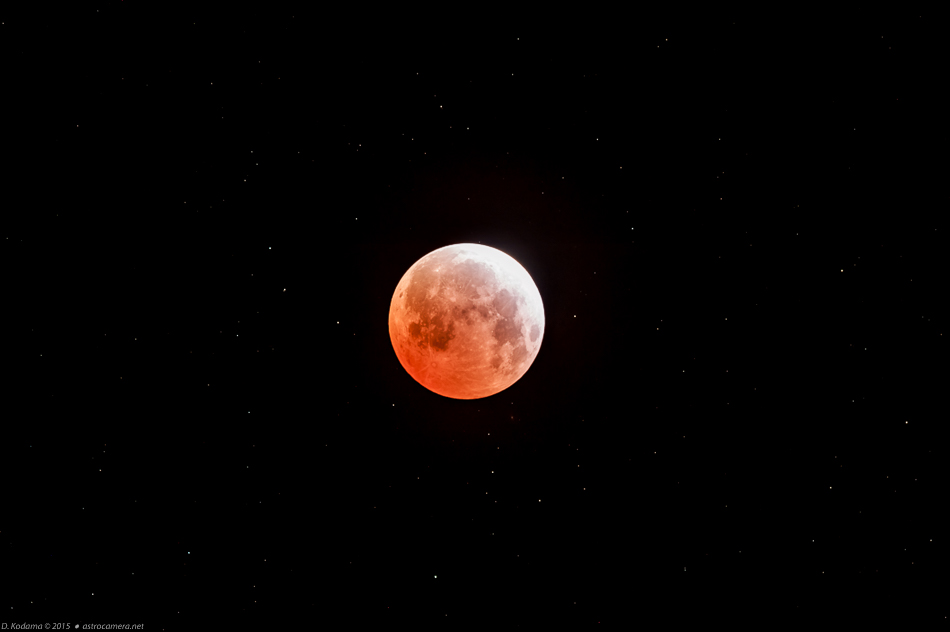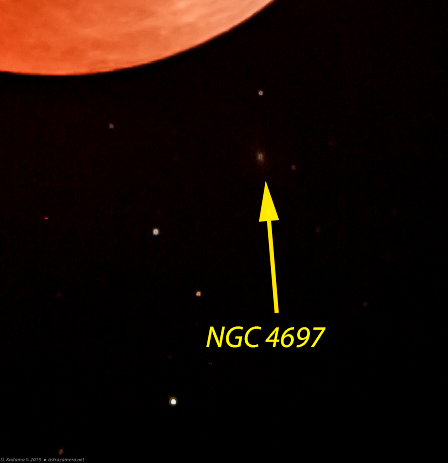This lunar eclipse was so close to the edge of the Earth's shadow that some
are arguing that it wasn't truly a total eclipse. Well, whatever you call it,
the gradient of the shadow on the moon was very obvious in this eclipse. The above photo
was taken during the eclipse maximum. It is a very long exposure (15 sec.) and
highly contrast enhanced because I was trying to capture an image of a galaxy (NGC 4697)
which happened to be in the background in this part of the sky.
The galaxy was actually occulted by the moon during the partial eclipse phase
and had just re-emerged from behind the passing moon. What you see in this photo
is just the bright core of the galaxy. Normally it's impossible to see
such a dim object next to the much, much brighter full moon. The eclipsed moon helped
a lot but even so, in this photo it's a tiny smudge washed out by the remaining moon
illumination and atmospheric scattering.
Technical details:
- Camera: Nikon D700
- Exposure: 15 sec. @ ISO 400
- Scope: Borg 100ED f/6.4 + 1.04x flattener
- Mount: Losmandy G11/Gemini
- Guider: none







